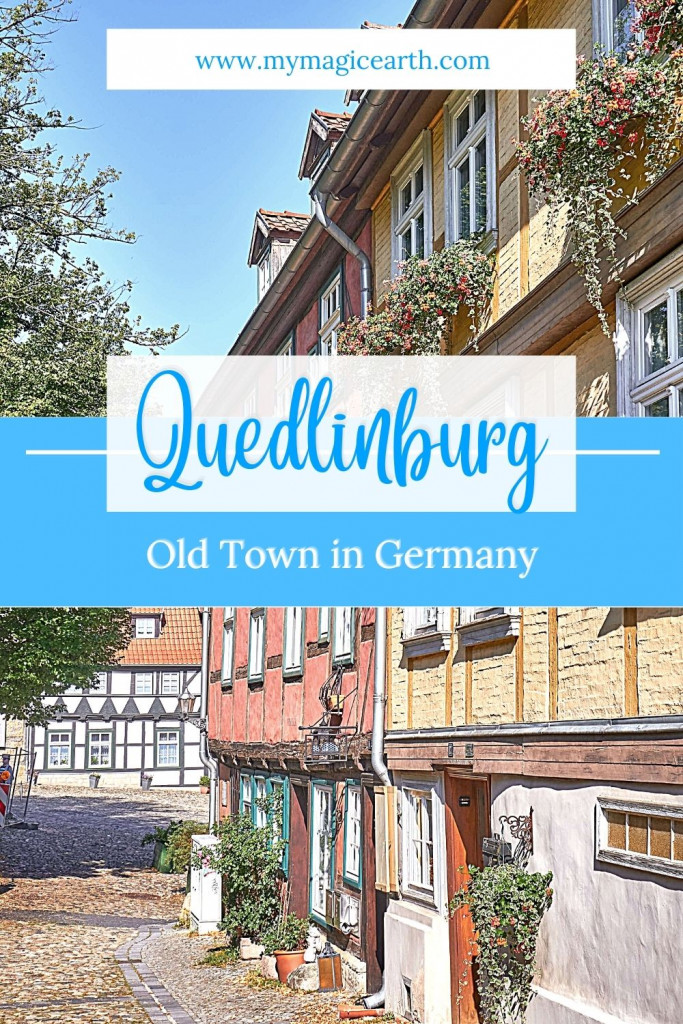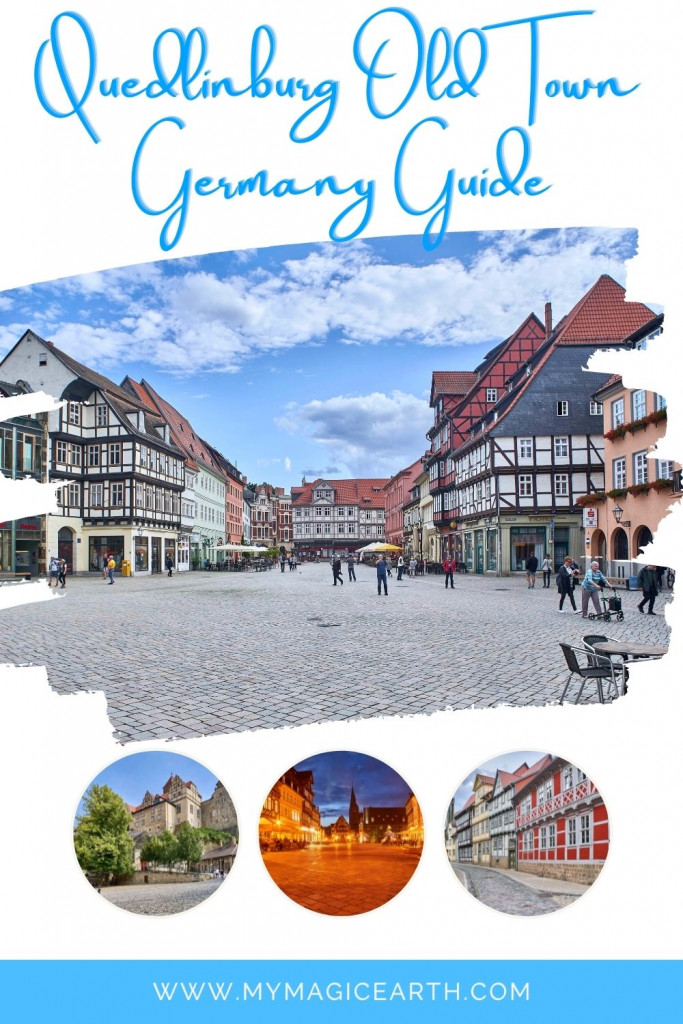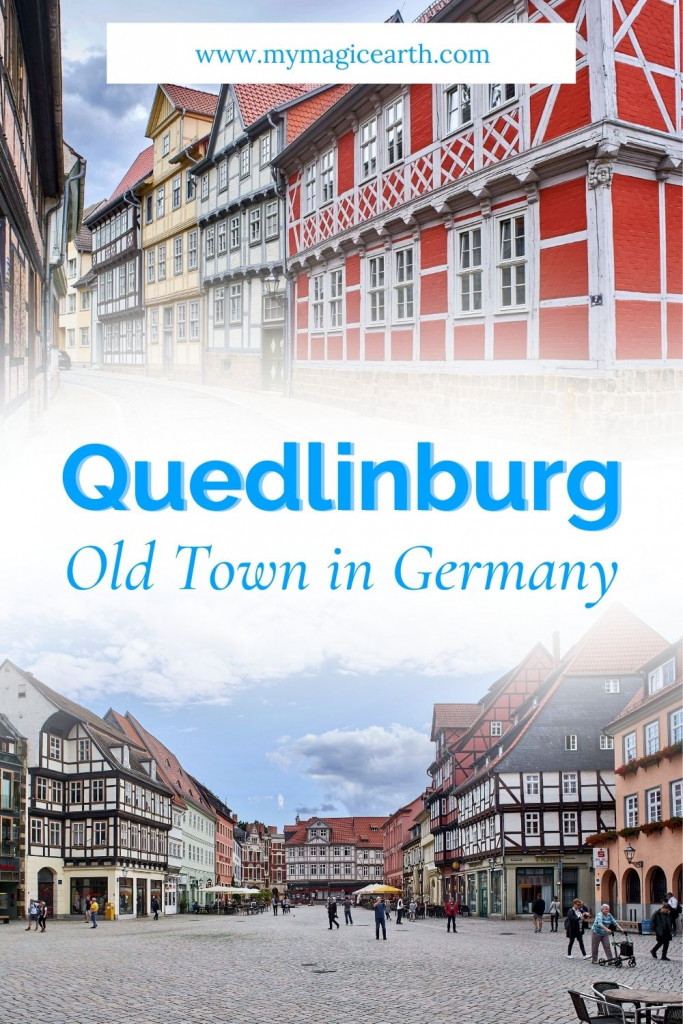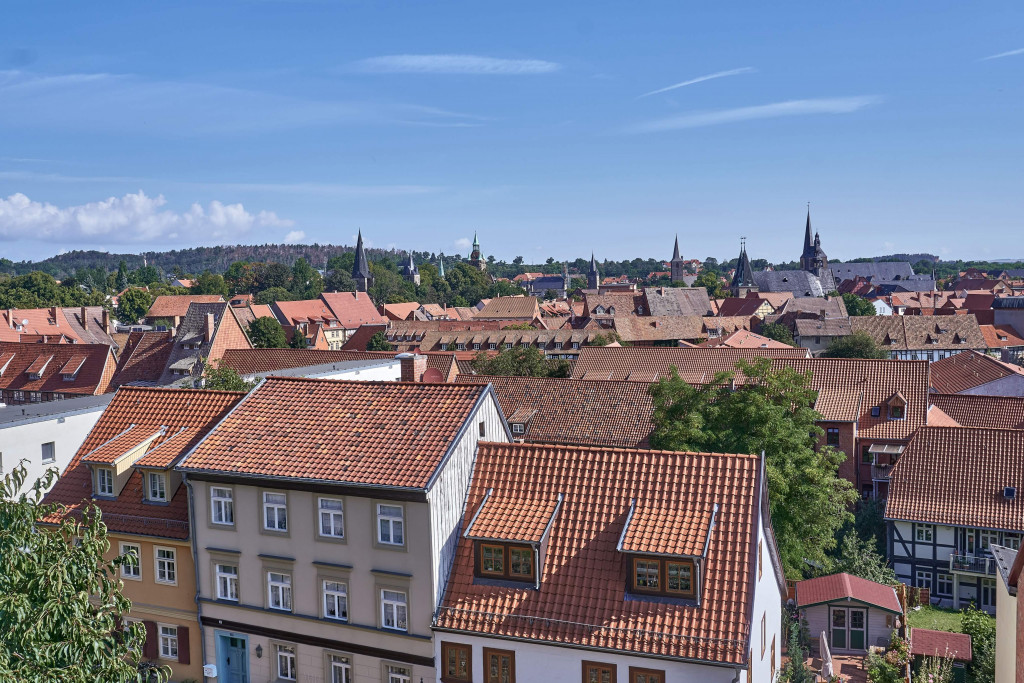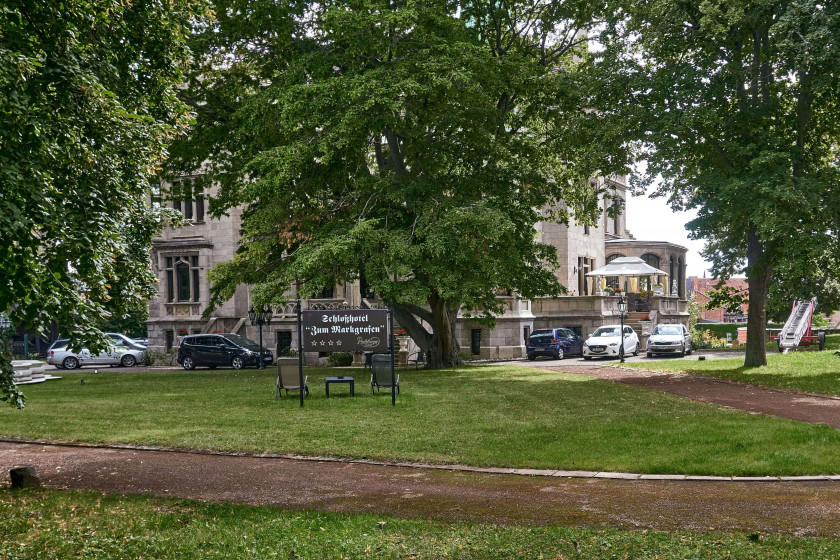The old town of Quedlinburg in the Harz Mountains represents the medieval essence of the city. With a half-timbered history dating back almost 1100 years and exhibiting over 2000 half-timbered houses spanning eight centuries, Quedlinburg stands as a quintessential medieval German city. The old town of Quedlinburg, characterized by charming cobbled streets, vibrant half-timbered houses, the imposing castle hill, and more, ranks among the best-preserved medieval historic centres in Germany.
Renowned as the birthplace of Germany. Quedlinburg was founded in the 10th century by Heinrich, the king of East Francia, who lived there and played a pivotal role in the unification of Germany. However, during the DDR regime, the entire city was left almost in ruins. Since the reunification, the city has undergone a gradual process of restoration.
I had never come across this town until one day when my German relatives mentioned it. Consequently, our family chose Quedlinburg as the hub for exploring the Harz Mountains. Renowned as one of the best romantic getaways in Germany, the old town of Quedlinburg in the Harz Mountains is replete with unique features:
- Quedlinburg Castle Hill (Schlossberg)
- Colourful Half-timbered house
- Market Square
- A Romantic Evening Walk in the Old Town of Quedlinburg
- Finkenherd Quarter
- Sternkiekerturm
- Münzenberg
- Two Epic Restaurants
- 14 preserved churches and chapels
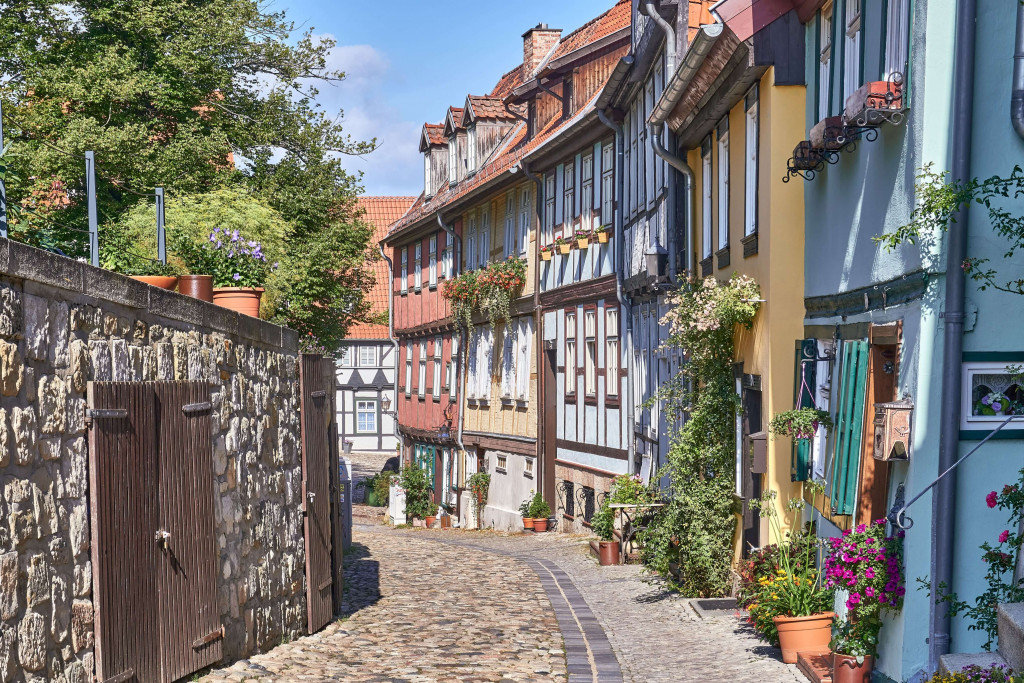
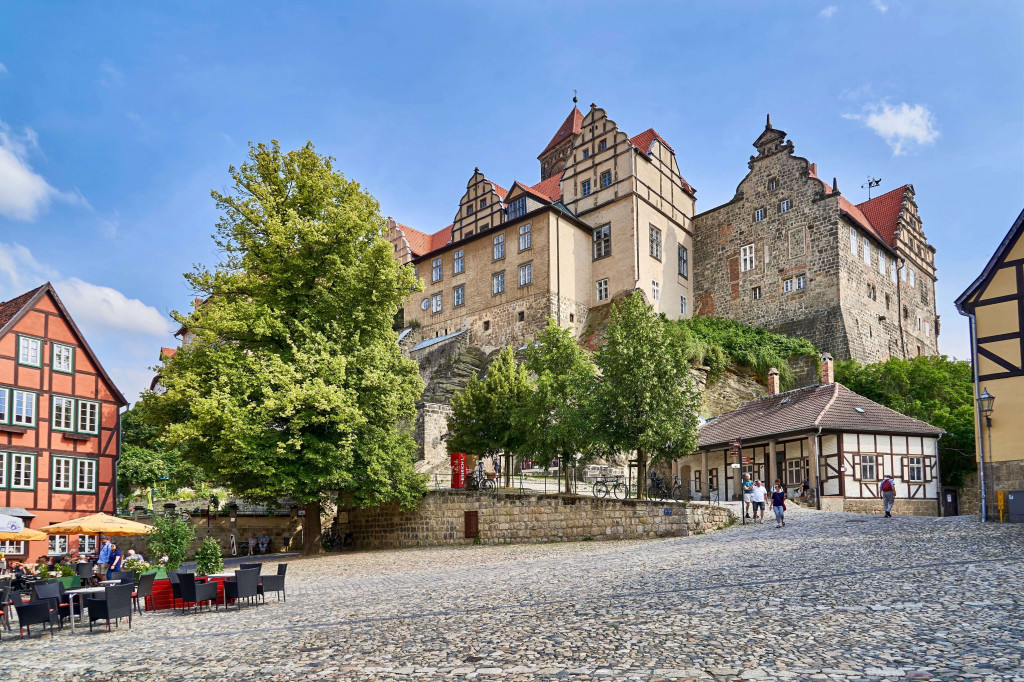
Quedlinburg Castle Hill (Schlossberg)
The stately Quedlinburg Castle sits atop sandstone cliffs, looking down at the rows of colourfully restored half-timbered houses below. Next to the castle, the more than a thousand-year-old Romanesque collegiate church St. Servatius towers is an imposing landmark of the city.
Instead of heading straight to the castle, we went via a small street parallel to the hill. The street consists of many half-timbered houses, colourful painted and beautifully decorated. Nearly at the end of the road, there is a stairway up to the hill. From the castle garden, we had a rooftop view of the Quedlinburg old town. The castle garden is small but well-maintained. There is a herbal garden as well.
The grand Quedlinburg Castle sits atop sandstone cliffs, overseeing the rows of restored half-timbered houses below. Next to the castle, the more than a thousand-year-old Romanesque collegiate church, St. Servatius, stands tall as a commanding landmark of the city.
Rather than taking a direct route to the castle, we went along a narrow street parallel to the hill. This street boasted numerous half-timbered houses, colourful painted and beautifully decorated. Towards the end of the road, a stairway led us up to the hill. From the castle garden, we enjoyed a panoramic view of the Quedlinburg old town. Though small, the castle garden was impeccably maintained, featuring a charming herbal garden as well.
Colourful Half-timbered house
In Quedlinburg, there are roughly 2,000 half-timbered buildings, representing various centuries, with many clustered in the historic centre. The distinctive style of these half-timbered houses stands out as a key factor in the old town of Quedlinburg’s recognition as a UNESCO site in the Harz Mountains.
A notable characteristic of these houses is the “vertical beam” construction style, where the entire façade is constructed using vertical beams. Another significant feature caught my attention is the colourful painted walls, ranging from yellow, orange, pink to green, nestled between the exposed beams.
Half-timbered houses from different historical periods exhibit their own unique features. For instance, those from the late Gothic epoch often have multi-level structures, with the top floor consistently protruding beyond the one below. To uncover the rich history of timbered house construction, one need only take a leisurely stroll through the town.
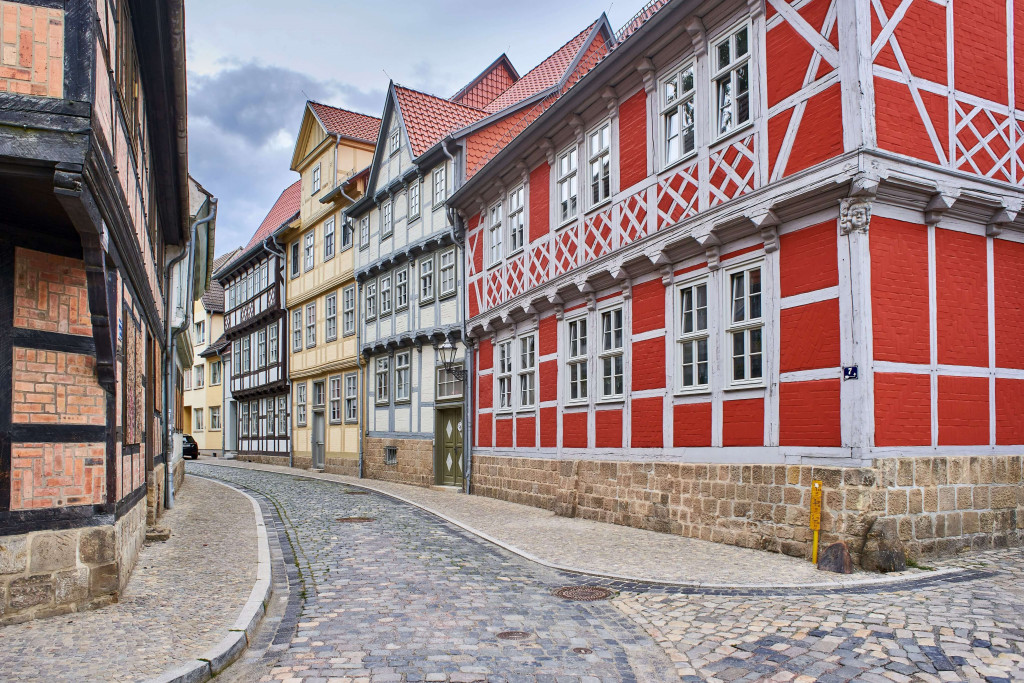
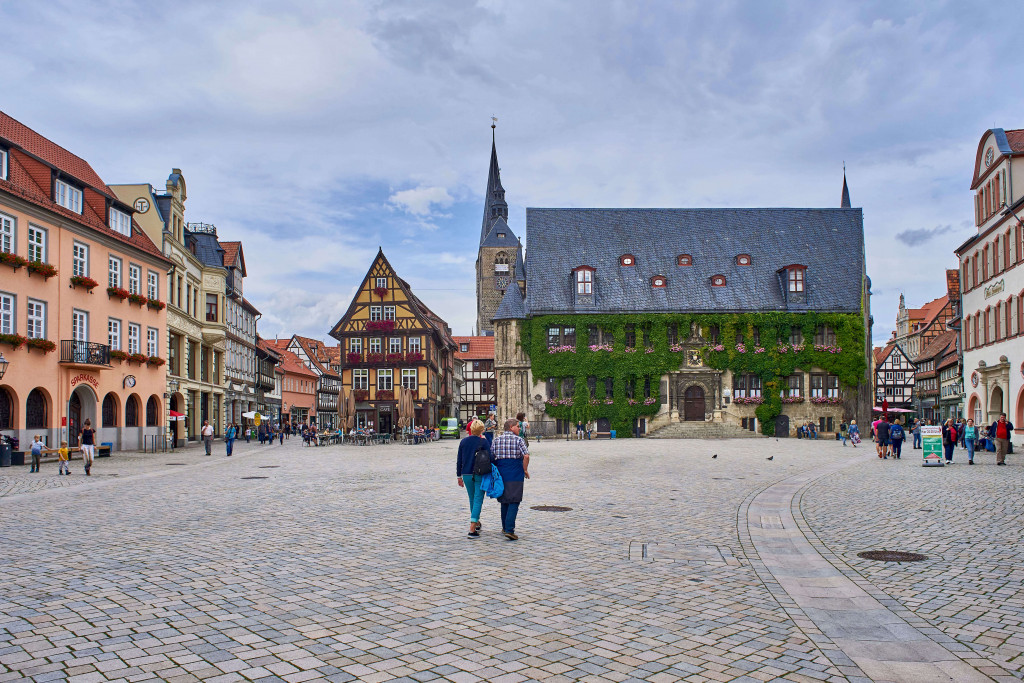
Market Square
The market square is slice of living heritage. Imagine a grand late Gothic town hall, standing tall and proud, and right beside it, a statue of Roland adding an extra touch of charm. If you look to the left, you’ll spot the soaring towers of the market church of St. Benedikti, reaching up into the cloudy sky. Now, let your eyes wander along the lengthy sides of the square, adorned with vibrant half-timbered houses from the 16th to 18th centuries. And in the foreground, meet the “Münzenberg Musicians,” a lively bunch inspired by the nearby Münzenberg.
The market square serves as a bustling hub for various establishments, including restaurants, shops, and hotels. Café Zum Roland, featuring seven interconnected and carefully restored half-timbered houses, sits elegantly on the edge of the square. Additionally, the Quedlinburg Tourist Information is conveniently located right on the market square.
A Romantic Evening Walk
A night walk through the old town of Quedlinburg is truly romantic. Our accommodation was conveniently located near the market square, so we decided to seize the opportunity for an evening walk. As the last rays of daylight bid farewell on that summer day, the soft glow of lights emanating from the buildings cast a sweet ambiance of romance.
We strolled through the labyrinthine side streets, where the pale lantern lights cast a gentle glow on the cobbled pavement. The only sounds that echoed were our own whispers and the rhythm of our breathing. At each turn, we found opportunities to capture the fascinating night scene through our lens.


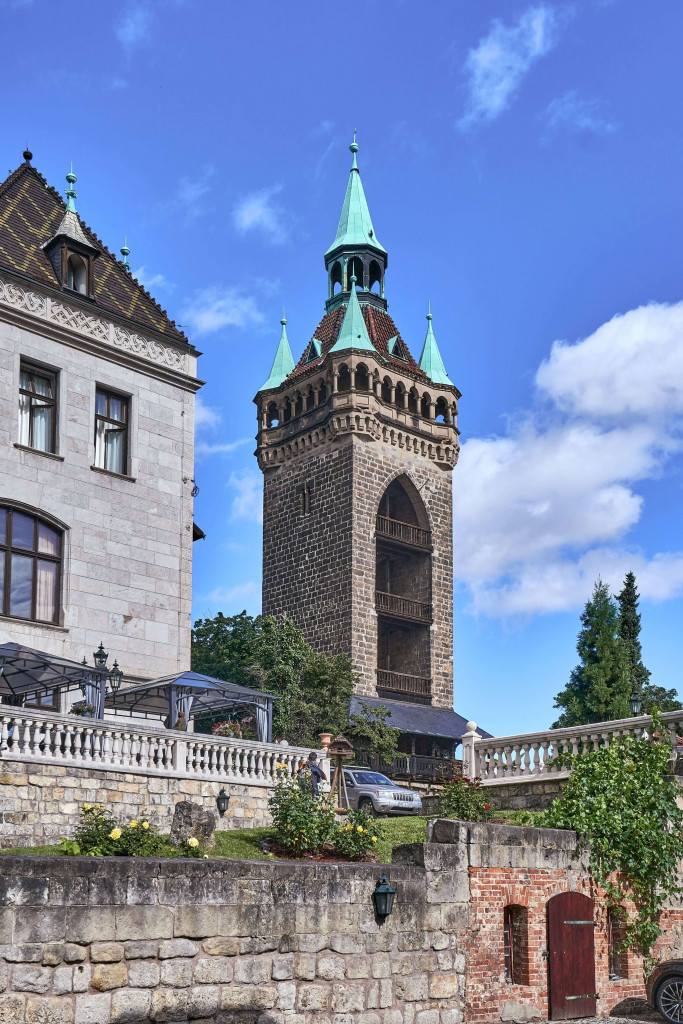
Finkenherd Quarter
When heading from the old town towards the castle hill, we passed through a quarter known locally as Finkenherd, which served as the ancient merchant centre during the Middle Ages.
The houses in this area stand closely together, with some now housing small shops and cafes like Café Vincent and the Klopstock Museum. Notably, the birthplace of the renowned German poet Klopstock and the castle gate are also situated here.
Our family chose to explore this quarter in the early morning to capture the silent ambiance before the arrival of tourists. Additionally, we revisited in the evening, managing to capture more exceptional shots of the peaceful scene with minimal tourist presence.
Sternkiekerturm
The Sternkiekerturm stands approximately 200 metres northwest of Quedlinburg’s market square. Originally part of the city’s defense system, this 42-metre-high tower now serves as an observation point for both residents and visitors of Quedlinburg. The top viewing platform, one of the highest in the city, offers a delightful panorama of the surroundings.
To reach the Sternkiekerturm, we had to go through the Schlosshotel Zum Markgrafen premises.
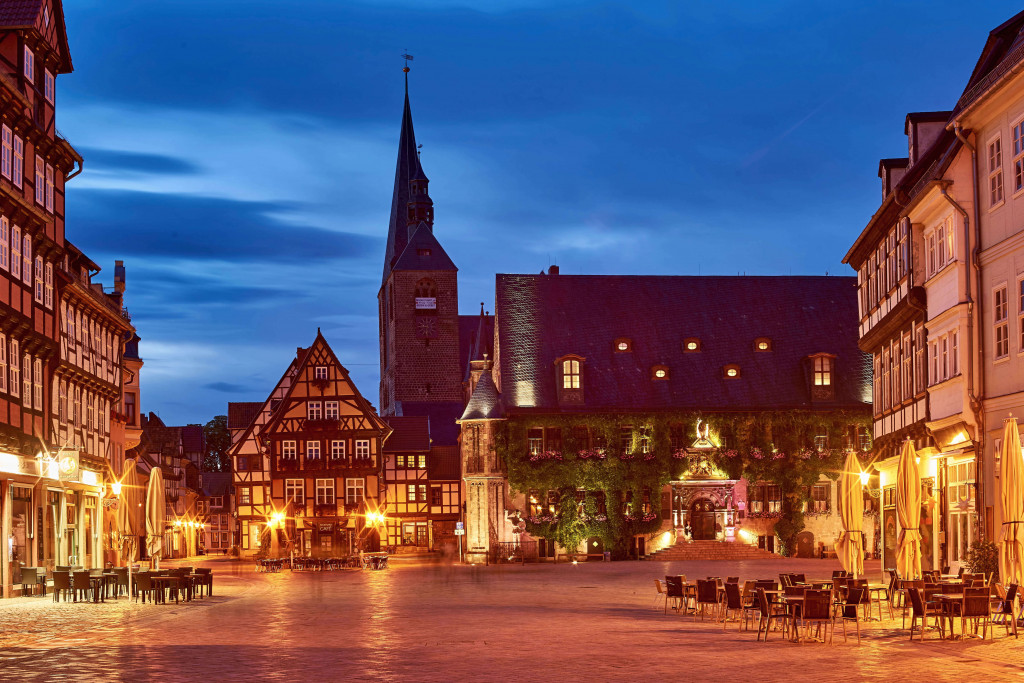
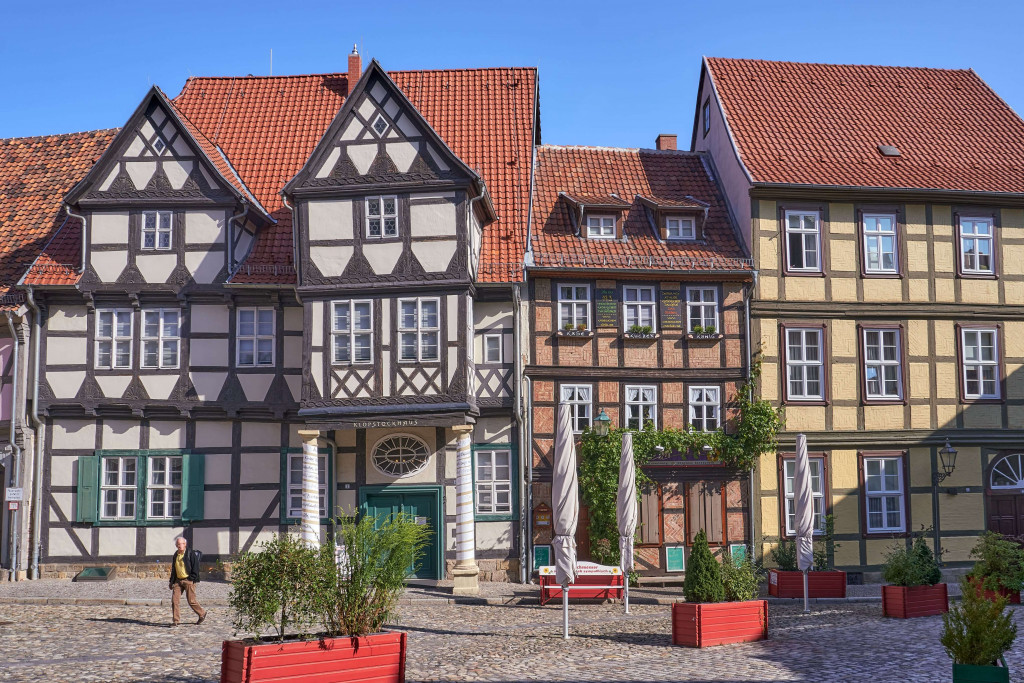
Münzenberg
Münzenberg, perched on a hill, is just a short 10-minute walk from the old town centre. This quaint settlement features a collection of several dozen half-timbered houses and a fascinating museum chronicling the history of Münzenberg. The panoramic view from the hilltop is truly spectacular.
Two Epic Restaurants
In the old town of Quedlinburg, numerous restaurants are situated at various levels. Of particular allure are Café Zum Roland and Café Vincent.
Café Zum Roland (Breite Str. 1-3, 06484 Quedlinburg)
Café Zum Roland is famous for its seven interconnected restored half-timbered houses dating back to the 16th and 17th centuries. Navigating through the narrow path from the cake counter in the first house to the sofa paradise in the seventh house, we could explore rooms and corners on both sides. Each room boasts a unique style with different sofas, tables, chairs, old appliances, decorations, photos, and more. It felt like stepping into grandma’s living room—warm, cozy, and relaxing.
The kitchen serves up straightforward German dishes. However, the cake counter sells delightful treats like the Quedlinburger Pfarrhaustorte and Mandel Makronentorte, which, in my experience, are unique and haven’t been spotted elsewhere.
Café Vincent (Schloßberg 13, 06484 Quedlinburg)
Café Vincent excels in its impressive selection of up to 193 different cheesecake varieties. This charming bakery, run by a group of women, decides daily which cheesecakes to feature. If you aim to savor all the unique recipes, frequent visits are a must. Some interesting flavours include pomegranate-jalapenos, green fig, pistachio-Marzipan, and gooseberry meringue.
We purchased cheesecakes featuring unique ingredient combinations: Cherry-honey (Kirsch Honig), Blueberry Lime (Heidelbeer Limette), Lingonberry Yogurt (Preiselbeer Joghurt), and Sea Buckthorn Cassis (Sanddorn Cassis) flavors.
14 preserved Churches and chapels
The city of Quedlinburg boasts fourteen well-preserved churches and chapels, with some located within the historic centre, including Collegiate Church St. Servatii Quedlinburg, Marktkirche St. Benediktii, and St. Nikolai Church. While wandering through the town, we might not have seen all fourteen churches and chapels, but the panoramic view from the Quedlinburg castle garden displayed the abundance of church spires, highlighting the city’s rich ecclesiastical heritage.
Travel tips for the old town of Quedlinburg in the Harz Mountains
Where to stay
If you’re traveling from major German cities like Berlin, Hamburg, or Frankfurt, considering the distance, a day trip to Quedlinburg might be challenging. It’s advisable to plan a stay of two to three days to fully immerse yourself in exploring the city and its surroundings.
During our visit, we chose to stay at Apartment am Pulverturm, conveniently situated in the heart of the old town of Quedlinburg and in close proximity to the castle. Other notable accommodations in the historic centre include:
How to get there
The old town of Quedlinburg is just a leisurely ten-minute stroll from both the train and bus stations. If you’re coming by train from Berlin HBf, opt for the Quedlinburg BHF route via Magdeburg HBf – a journey lasting around three hours. Alternatively, Flixbus offers a more budget-friendly choice from Berlin, also taking about three hours.
For those on the road, follow road 36, then make a turn onto road 79, heading south. In just a few minutes, you’ll find yourself in Quedlinburg. Free parking spots are available along Wallstraße, situated behind the Schlosshotel Zum Markgrafen.
